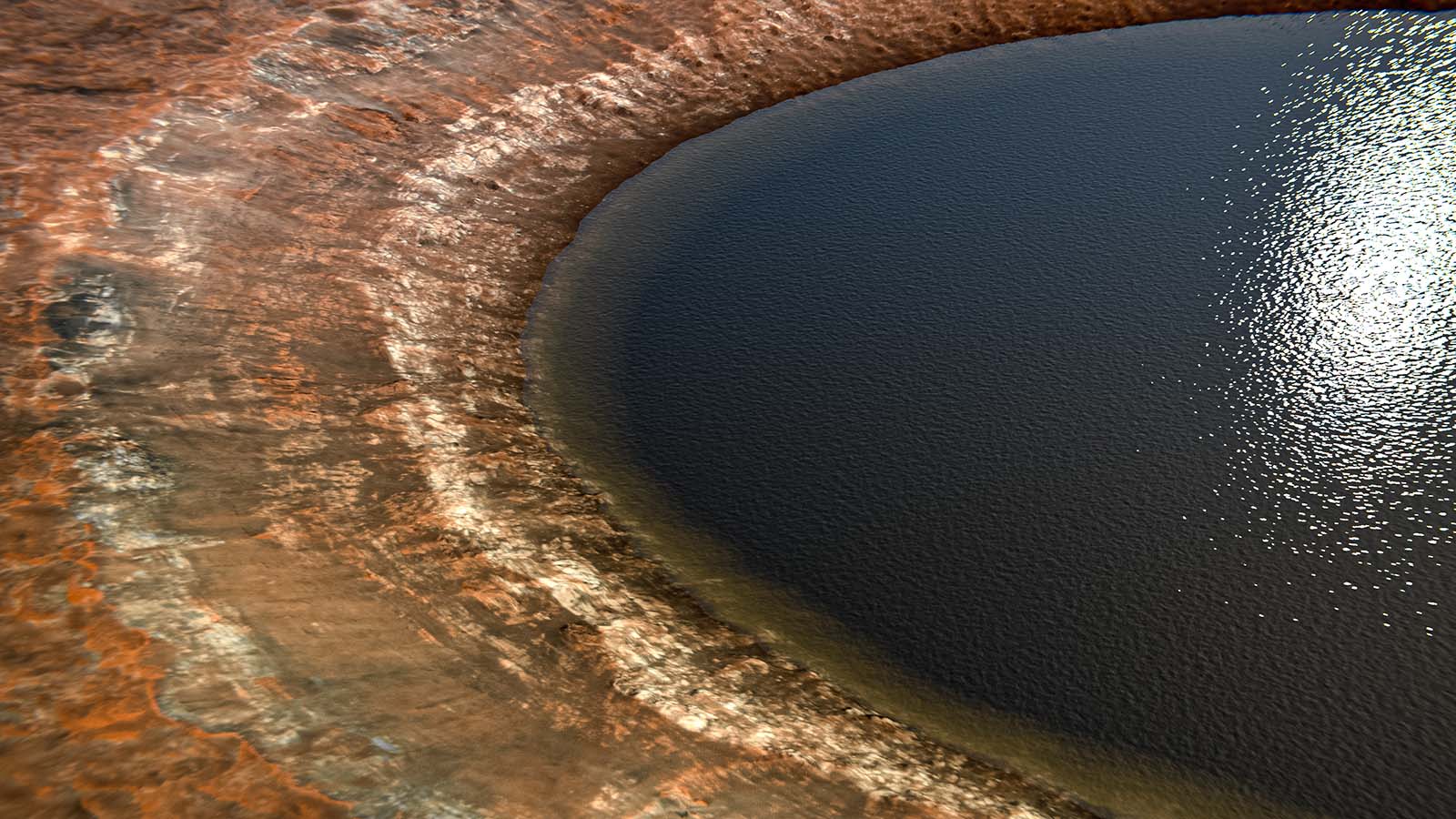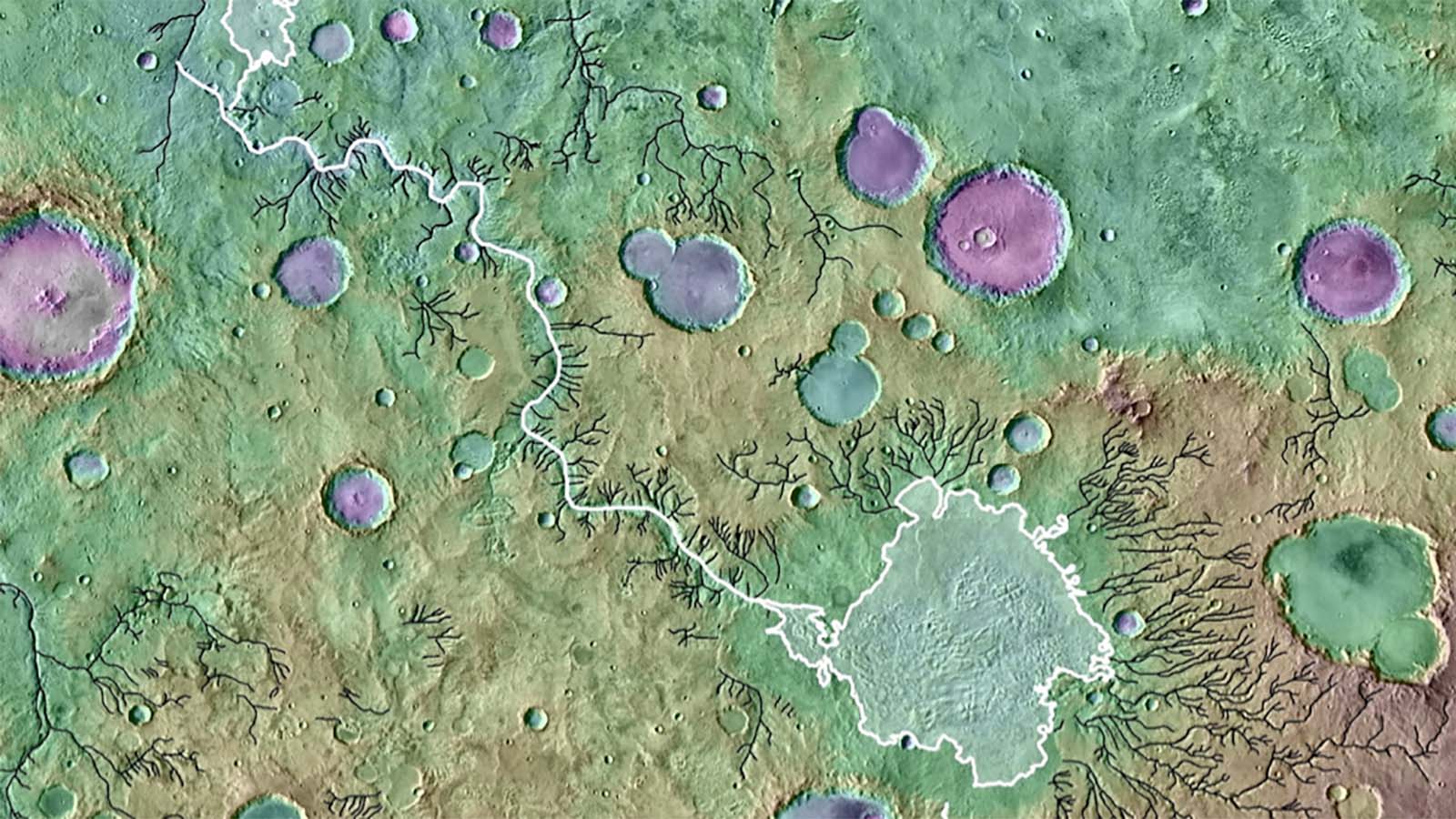Mystery of Mars' ancient trenches might have finally been solved
The deep trenches on the surface of Mars have long been one of the planet's more fascinating mysteries, but now a team of researchers might have identified what caused the deep river valleys that have perplexed scientists for decades – and the answer is about as violent as the planet's namesake.
On Earth, river erosion is typically a gradual process that takes place over centuries or even millions of years, scoring the surface soil bit by tiny bit; but on Mars, a more catastrophic process might have been far more common.
Planetary scientists studying Mars have long known that many of the various craters on the Martian surface were once filled with water about 3.5 billion to 3 billion years ago and that sometimes, just like here on Earth, those lakes would overflow the rim of the craters containing them.
These so-called lake breaches often lead to catastrophic flooding when they occur here on Earth, as the water breaking over the edge of the lake will quickly erode the sediment holding back the lake, tearing open an ever-widening breach for the massive volume of water in a crater lake to escape.
On Earth, geological processes have eroded most of the craters around the world so that very few remain, so most crater-like lakes here are actually the calderas of extinct volcanoes.
Mars, on the other hand, is a very crater-filled place, and some of its craters are billions of years old. Now, a new study published September 29 in the journal Nature from a research team at the University of Texas at Austin (UT) argues that these craters might hold the key to Mars' river-scarred landscape.
By examining more than 250 craters known to have suffered crater lake breaches in the past, the UT researchers found that the fast, extremely violent flooding from these lake breaches could have been what carved out many of the most dramatic river valleys and canyons on Mars' surface.

The lake breach events in the study, which could empty out entire seas' worth of water from a crater in just a few weeks, were enough to carve up and carry off enough Martian sediment to fill Lake Superior and Lake Ontario, the researchers said.
"If we think about how sediment was being moved across the landscape on ancient Mars, lake breach floods were a really important process globally," Tim Goudge, assistant professor at UT's Jackson School of Geosciences, and the lead author on this week's paper, said in a statement. “And this is a bit of a surprising result because they’ve been thought of as one-off anomalies for so long.”
Using an existing catalog of Martian river valleys and identifying those that began at the edge of a crater, the UT researchers were able to isolate those that were the product of these lake breach floods and those that were produced by more typical and more gradual processes.
They found that even though lake breach flooding only accounted for 3% of total valley length on Mars, data from satellites in orbit around Mars showed that these events accounted for fully 25% of all eroded valley volume on Mars.
“This discrepancy is accounted for by the fact that outlet canyons are significantly deeper than other valleys,” said Alexander Morgan, research scientist at the Planetary Science Institute and co-author of the paper..
The resulting river valleys were also more than twice as deep, with a median depth of 559 feet (170.5 meters), as opposed to the more gradual valley's median depth of 254 feet (77.5 meters).
“When you fill [the craters] with water, it’s a lot of stored energy there to be released,” Goudge said. “It makes sense that Mars might tip, in this case, toward being shaped by catastrophism more than the Earth.”
- Mars never had a chance: new study says Red Planet just too small to hold onto water
- NASA Mars Perseverance rover captures teeny, tiny Martian moon Deimos on film
- Should we go to Venus instead of Mars?
Analysis: nature is awe-inspiring, even on other worlds

If this latest research is correct, it really does demonstrate the absolute raw power of nature. If human explorers wanted to carve out hundred-kilometer deep trenches in the Martian landscape, they would have to spend years or even decades blowing out dirt and material with explosives.
Explosives have given us the power to cut through mountains – eventually – but that pales in comparison to the power of even gently flowing water, much less the kind of powerful flooding events this new paper details that were carving out some of the largest canyons known in the solar system in just a few weeks or months.
The Grand Canyon, meanwhile, took the Colorado river five to six million years to carve out.
Hopefully, by studying ancient flooding events like this in Mars' past, we'll be able to figure out where all that water went, and if its still there, somewhere, beneath the surface.
Contributer : Techradar - All the latest technology news https://ift.tt/3igBJVk

 Reviewed by mimisabreena
on
Thursday, September 30, 2021
Rating:
Reviewed by mimisabreena
on
Thursday, September 30, 2021
Rating:















No comments:
Post a Comment